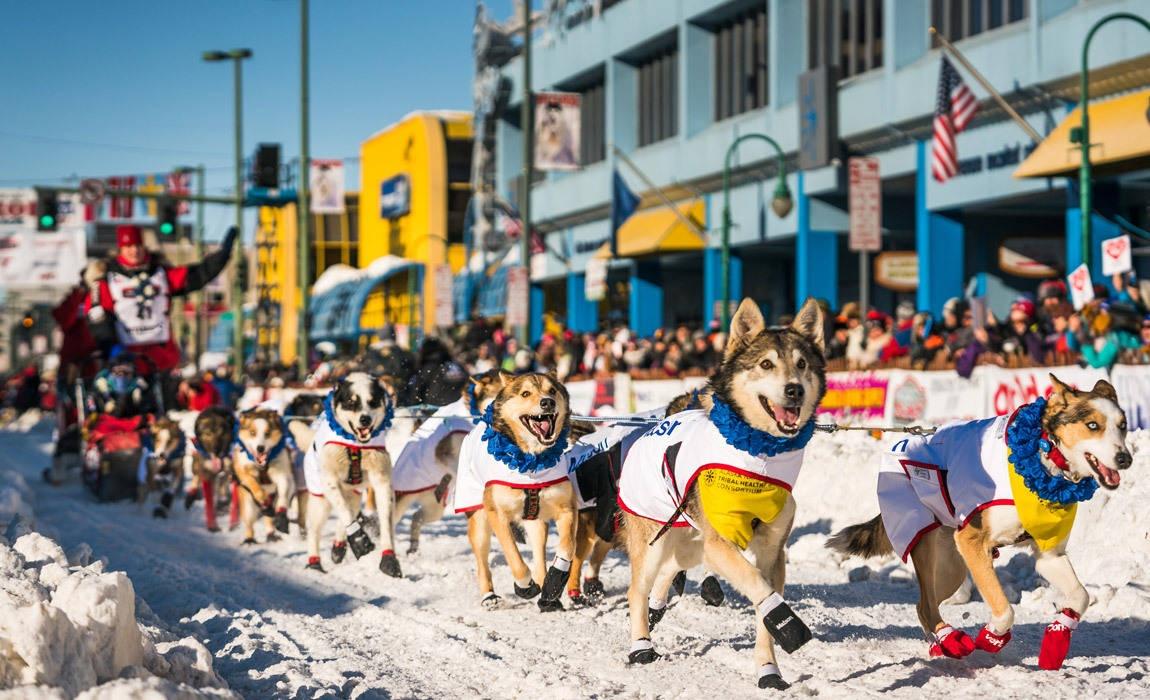Alaska is a pretty distinct place with it's own unique native culture that often blends with a heritage of miners, gold seekers, and other colorful folks seeking a future in America's Last Frontier. Whether these words are Alaska slang, native Alaskan words that have made their way into English or phrases that combine the two, Alaskans use some of the most beautiful as well as most colorful words that you will hear anywhere on your travels.
For folks from the "lower 48" these words can be confusing to say and challenging to understand. For some it can also be challenging to understand when to use Alaskan slang words properly. We love to explore and share fun and unique ways to experience new cultures, so we're excited to share this list of words and cultural vocabulary provided by the folks at Visit Anchorage.
Alaskans have some pretty specialized terminology for the incredible things in their home state. Here’s a list of terms that may be helpful when speaking with Alaskans or planning a visit to Anchorage and other parts of the state.
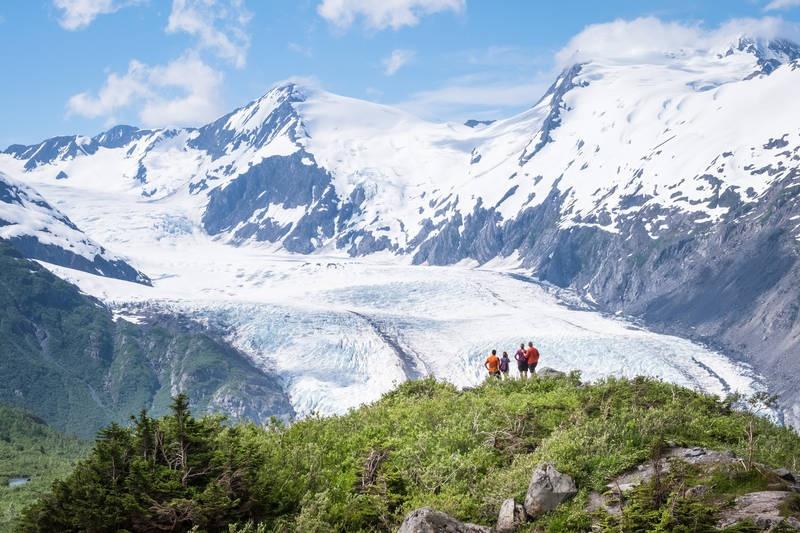
Places In Alaska You Might Hear People Talk About
ALCAN – Short for the Alaska/Canada Highway, this famed highway runs through Canada and connects Alaska with the Lower 48. The 1,523-mile highway (2,451 kilometers) was completed in 1943 and runs from Dawson Creek, British Columbia, to Delta Junction, Alaska, via Whitehorse, Yukon.
Alyeska (al-lee-YES-ka) – This Aleut word meaning “Great Land” or “Main Land” is also the name of Alaska’s largest ski resort located 40 miles south of Anchorage in the town of Girdwood. Mount Alyeska is 3,939 feet tall.
The Bush – Typically refers to places in rural Alaska not accessible by the road or rail system, which encompasses a large portion of the state. Most parts of Alaska that are off the road and rail system can only be reached by small airplane or through alternative means of transportation such as snowmobile or snowmachine, boat or dog sled.
Chugach (Chew-gach) – The Chugach people, Alutiiq people from the Kenai Peninsula, gave their name to Chugach National Forest, Chugach Mountains and Alaska's Chugach State Park. All are located in or near the traditional range of the Chugach people in southcentral Alaska.
Chugiak (Chew-gee-ack) – a small community located approximately a 20-minute drive north of Anchorage.
Cook Inlet – The Cook Inlet region includes the most densely populated part of Alaska and Anchorage is located at the head of Cook Inlet and it stretches 180 miles (290 km) to the Gulf of Alaska. Cook Inlet branches into the Knik Arm and Turnagain Arm at its northern end, almost surrounding Anchorage.
Denali (deh-NAL-ee) – This Koyukon Athabascan word means the high one. Denali is the name given to the massive 20,310-foot peak by the Koyukon Athabascan people. Denali, formerly known as Mount McKinley, is the tallest peak in North America. The mountain’s name was officially changed back to Denali in 2015.
Eklutna (ee-KLOOT-nuh) – A Dena’ina Athabascan village within the Municipality of Anchorage with a population of about 70 people. It is the oldest inhabited location in the Anchorage area.
Flattop – Flattop Mountain is a 3,510-foot mountain located in the Chugach State Park along the Anchorage hillside. The most climbed mountain in the state is easily reached by driving to the Glen Alps trailhead and following a well-maintained 1.5-mile (2.4-km) trail, with an elevation gain of 1280 feet (390 m) from the parking lot to the summit. Since it is the most accessible mountain to Anchorage, Flattop is a popular location for hiking, climbing, berry picking, paragliding, and backcountry skiing. Campouts are held on the summit at the summer and winter solstices. It is also known for its panoramic views of Anchorage and the surrounding area, including Denali, Mount Foraker, and Mount Spurr.
The Kenai (KEY-nigh) – This is also known as the Peninsula on second reference. The Kenai refers to the peninsula south of Anchorage bound by Cook Inlet, Prince William Sound and the Gulf of Alaska. The city of Kenai is located where the world-famous Kenai River meets the Cook Inlet.
Lower 48 – Alaskans refer to the continental United States as the Lower 48 for all of the contiguous states excluding Alaska and Hawaii.
Outside – When someone is not in Alaska, they are referred to being Outside with a capital “O.” Alaskans often travel Outside for business or vacations.
PAC – Short for the Alaska Center for the Performing Arts, Anchorage’s four-theatre complex which provides a place for Alaskans to enjoy music and dance performances, plays, operas and even Broadway musicals. The PAC was built in 1988.
Potter Marsh – Located at the southern end of the Anchorage Coastal Wildlife Refuge, Potter Marsh is one of the most accessible and scenic wildlife viewing areas in Alaska, particularly for salmon, birds and occasionally moose. A 1,550-foot boardwalk with interpretive signs provides access to the northern part of the marsh.
Railbelt – The portions of Southcentral and Interior Alaska connected by the Alaska Railroad. Cities and towns along the railbelt include Fairbanks, Talkeetna, Anchorage, Girdwood and Seward.
Sleeping Lady – A local, informal name for Mount Susitna. The mountain is located across the Cook Inlet and is visible from Anchorage.
Southcentral – The area of Alaska between the Gulf of Alaska and the Alaska Range. Included in Southcentral are Anchorage, the Mat-Su area, Kodiak, Valdez and all of the Kenai Peninsula. The “S” is always capitalized.
Turnagain Arm – Located just south of Anchorage, the Seward Highway hugs the dramatic shoreline of Turnagain Arm, arguably one of the most beautiful stretches of highway in America. Chugach State Park's 3,000-foot mountains jut up on the other side of the highway.
Words For Different Types of Alaskan People
Cheechako – This is a popular slang word that is used to describe any newcomer to Alaska, and what in the west would have been called a "greenhorn."
Dena’ina (Dee-NYE-nah) – The Dena’ina people are the original inhabitants of southcentral region of Alaska who are Dena’ina Athabascan. The Dena’ina Civic and Convention Center is named after the Dena’ina people.
Musher – A person who drives a dog sled team, either competitively or recreationally.
Snowbird – A snowbird is an individual who spends summers in Alaska and migrates south for the winter.
Sourdough – This Alaskan slang word refers to a long-time Alaskan. Before commercial baking powder and yeast were readily available, sourdough was a staple of crusty, old-time miners, and the association stuck.
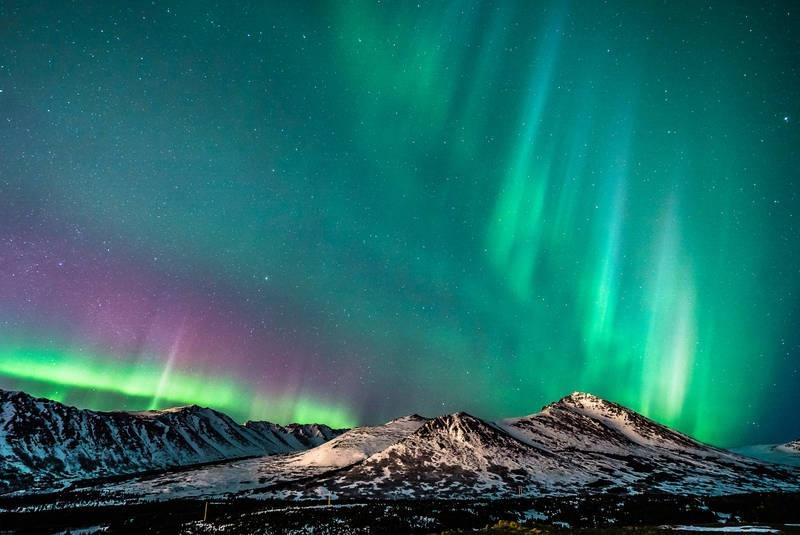
Things You Might See In Alaska
Alpenglow – The pink, orange or reddish hue on the mountains as sunset approaches. Most commonly viewed in late winter, spring and fall when the path of the sun best hits the mountains.
Aurora Borealis – The northern lights. The lights are seen around the magnetic poles in the northern and southern hemisphere and are caused by solar wind. Aurora that occurs in the northern hemisphere are called Aurora Borealis. The best times of the year to view the Aurora Borealis is August through May at 60th parallel north (Alaska)
Beluga – These whales get their name from the Russian word for white and are known as “white whales,” although only the older whales are actually white. Belugas can be spotted in Turnagain Arm south of Anchorage, along the scenic Seward Highway.
Calving – The action of large chunks of ice falling from the face of a glacier. Often seen during glacier and wildlife day cruises in Prince William Sound and Kenai Fjords National Park.
Xtra-Tuffs – Brand of rubber boots worn year-round by some in coastal areas, or the spring break-up season when the snow melts. The Xtra-Tuff brand – which has become somewhat of a fashion trend – is a necessity for anyone working in the fishing industry, along the water or in communities without paved roads.
Dall sheep (DOLL) – Dall Sheep inhabit the mountain ranges of Alaska but are sometimes found in rocky gorges below timberline in Southcentral Alaska. They can be seen along the Seward Highway just south of Anchorage. Uppercase the “D” in Dall, which is named for scientist William H. Dall.
Dog mushing – Alaska’s official state sport and an important mode of transportation, which is also known sled dog racing.
Flightseeing – Sightseeing by helicopter or small aircraft.
Floatplane – An aircraft equipped with pontoons able to land on water.
Fireweed – The magenta-colored perennial herb that blooms in late summer and autumn. Alaskans tell the tale that when the fireweed reach their bloom the countdown to winter begins.
Forget-me-nots – Alaska’s state flower. These tiny flowers grow low to the ground and are recognized by their bright blue petals surrounding a yellow eye. Forget-me-nots are found growing wild throughout most of the state, and you can pick up a packet of seeds in most Anchorage curio stores.
Ghost Forest – Coastal stands of trees preserved in salt water after the 1964 earthquake. Often mistaken for beetle-killed forest by travelers.
Ice worms – Tiny annelid worms about the thickness of a piece of thread living in the ice and snow near the surface of a glacier. Long thought a myth, these tiny worms thrive at temperatures at or near freezing. They can be seen at the Begich Boggs Visitor Center at Portage Glacier.
Moose – Alces Alces gigas. The same in plural form, moose are the world's largest member of the deer family and the Alaska race is the largest of all the moose.
Permafrost – Ground that stays frozen all year round and causes the humps and bumps in the Alaska road system.
PFD – This is the permanent fund dividend, created by constitutional amendment passed by voters in 1976 establishing the Permanent Fund from oil royalties. The fund was created to save at least 25 percent of Alaska's royalties from oil to be set aside. Permanent Alaska residents, who apply annually, have been fortunate to receive a yearly dividend check, based on earnings of the fund.
Snowmachine – Alaska-specific term for snowmobiles. Snowmachiners utilize these small motorized vehicles with runners and a continuous track for both recreation and a utility form of transportation in remote areas of the state.
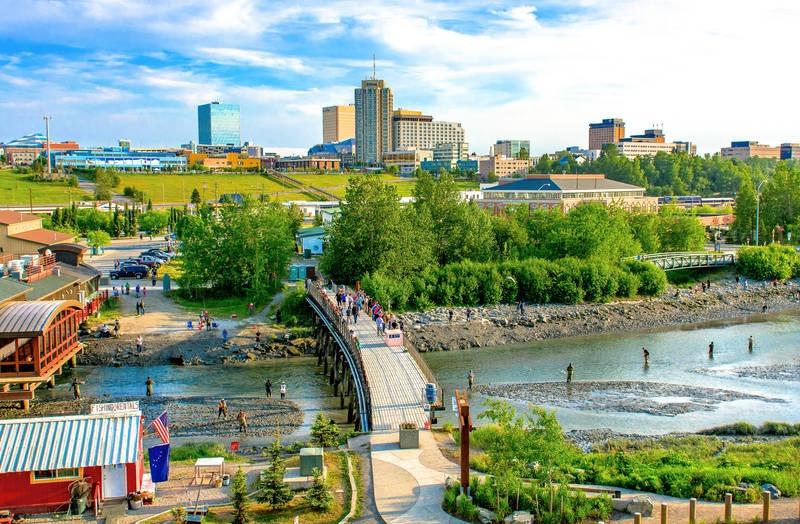
Fishing Terms You Might Hear In Alaska
Combat fishing - Alaska features the most salmon rich fishing streams in the world. Opening day is so eagerly anticipated that hundreds of shoulder-to-shoulder anglers will line the banks of the river, casting for fish. The trick is to actually hook a salmon and not a fellow fisherman. That's why many folks use the term when describing the opening day of salmon fishing in Alaska.
Hooligan – These oily fish were traditionally used as candles when dried and placed in stone holders. The small fish typically gather in large schools off the mouths streams to spawn during May in Southcentral Alaska.
Run – Refers to the time when fish swim back up the rivers to spawn. This is when they are harvested.
Salmon – Five species of Pacific salmon can be found in Alaska: Chinook or king salmon, Coho or silver salmon, humpback or pink salmon, sockeye or red salmon, and chum or dog salmon. Aside from bears and glaciers, salmon is probably one of the most common words associated with Alaska.
Spawn – The reproduction process of fish. The reproduction process of salmon is one of the most interesting life cycles of any animal on earth. Born in a fresh water stream and then migrating into the ocean to live in salt water, they migrate for thousands of miles before returning to their natal stream to spawn and then eventually die.
Weather Words You Might Hear in Alaska
Solstice – Summer Solstice is the longest day of the year, and Anchorage will see about 19 hours of daylight on June 21. Solstice is celebrated by Alaskans all over the state in a variety of ways. Winter Solstice, the shortest day of the year, has long been celebrated on December 21 as the day in the year when daylight gradually increases each day up until the Summer Solstice.
Termination dust – The first snowfall that sticks on the tops of the mountains each year, which signifies that winter is on its way. This gem of Alaska slang originally a gold rush term signaling the end of the prospecting season, it now gives low-land residents warning that snow will be falling in about a month and signals to snowbirds that they should already have left.
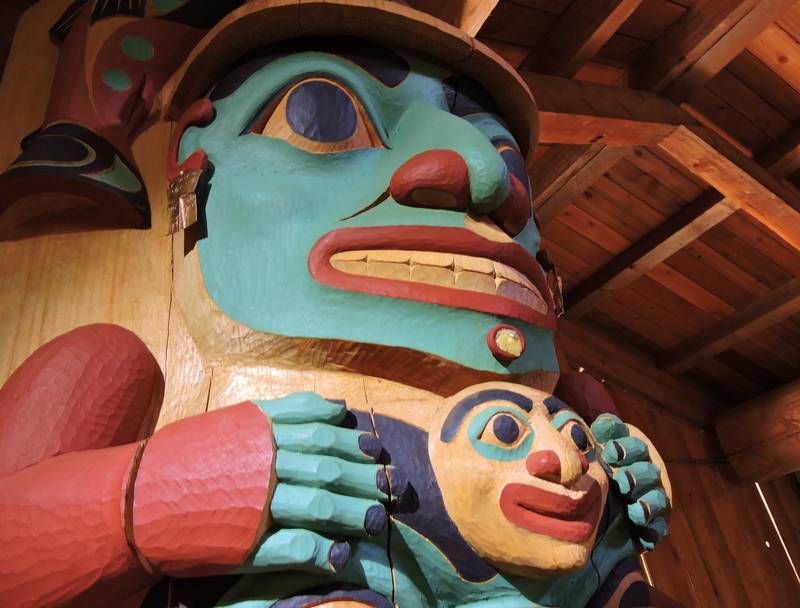
Words You Might Hear Related To Alaska Native Culture
Alaska Native – An Alaskan who has heritage in one of Alaska’s many distinct indigenous cultures. Always capitalized and used as an adjective.
Aleut & Alutiiq – Alaska Native people who traditionally lived in the area stretching from Prince William Sound to the end of the Aleutian Islands.
Athabascan – Alaska Native people who traditionally lived in the interior of Alaska.
Inupiaq & St. Lawrence Island Yupik – The Inupiaq and Yupik people are still hunting and gathering societies. They continue to subsist on the land and sea of north and northwest Alaska.
Kuspuk (KUSS-puck) – A cloth shirt or coat covering often made of calico fabric, or other heavy fabric. Kuspuk patterns vary by region, and cultural groups are able to distinguish among cultures based on pattern.
Subsistence – The practice of harvesting resources from nature for food, shelter, cultural or other personal needs. Many Alaska Native people still live a subsistence lifestyle.
Yup’ik/Cup’ik – Alaska Native people who traditionally lived in the western Alaska. This culture group has many traditional language speakers and a rich culture.
Eyak/Tlingit/Haida/Tshimshian – Alaska Native people who traditionally lived in the Southeast Alaska.
Alaska Gifts
Qiviut (KIH-vee-yoot) – The warm under-wool of the musk ox spun into yard and knitted into hats, scarves and other garments. It's stronger and eight-times warmer than wool from sheep and softer than silk or cashmere.
Ulu – The Alaska Native people of northern Alaska invented this knife centuries ago. It is used for hunting, fishing, skinning, filleting and every other imaginable domestic cutting need by the Eskimo people. Nowadays, replicas can be purchased at any souvenir shop in Alaska.
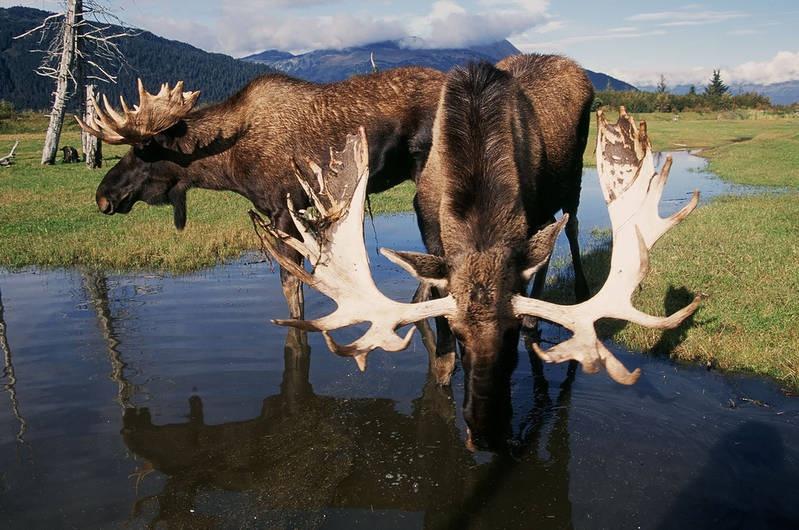
Commonly Mispronounced Alaska Words
Alyeska (al-lee-YES-ka) – One of the original names for Alaska, Alyeska is an Aleut word meaning “the great land.”
Kenai (KEY-nigh) – A community in Southcentral Alaska in the Kenai Peninsula Borough and the name of a major river popular for fishing.
Matanuska – Susitna (mat-uh-NOO-skuh soo-SIT-na) – This region includes Palmer, Wasilla, Big Lake and Willow and is also known as Mat-Su or the Valley.
Seward (SOO-ward) – A community in the Kenai Peninsula Borough named after William H. Seward, United States Secretary of State, who engineered the purchase of Alaska from the Russians.
Valdez (val-DEEZ) – A community located in Prince William Sound and where the terminus of the Alyeska Trans Alaska Pipeline System is located.
Thank you to Visit Anchorage for sharing this list of Alaska words, slang terms, and phrases to help us all be better travelers and make our next Alaska visit that much more enjoyable!
